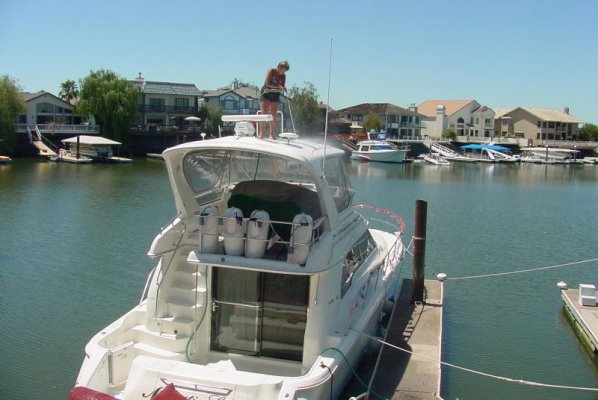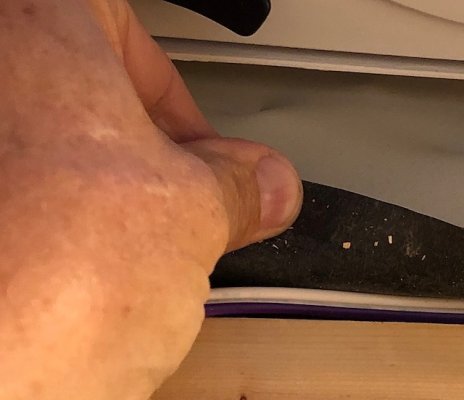Tom
Administrator
- Joined
- Jan 13, 2005
- Posts
- 51,932
We've looked at a lot of new and used 5th wheels (various brands) over the last six months, and viewed a number of videos of manufacturers' construction/production processes. It appears that they all use plywood covered with rubber on their roofs. I'm so used to a virtually worry-free fiberglass roof on our motorhome and on boats with a 'hard top'. Any reason that 5W's don't have fiberglass roofs, especially given the additional care and maintenance required with rubber-covered plywood?
FWIW while touring a dealer's lot recently, the salesman asked if we'd be interested in a "nice" used 5W. This unit had just been traded in, and it was immaculate inside and on the visible outside. I climbed up the ladder to take a peek at the roof. I placed a hand on the roof forward of/adjacent to the ladder and realized that an area approx 15"x15" was "soft". Looking around, I could see an excessive amount of sealant had been applied in that area. Clearly, the owner had a leak, tried to fix it, and eventually decided to trade the 5W before things got worse. We quickly said "no thanks".
FWIW while touring a dealer's lot recently, the salesman asked if we'd be interested in a "nice" used 5W. This unit had just been traded in, and it was immaculate inside and on the visible outside. I climbed up the ladder to take a peek at the roof. I placed a hand on the roof forward of/adjacent to the ladder and realized that an area approx 15"x15" was "soft". Looking around, I could see an excessive amount of sealant had been applied in that area. Clearly, the owner had a leak, tried to fix it, and eventually decided to trade the 5W before things got worse. We quickly said "no thanks".


